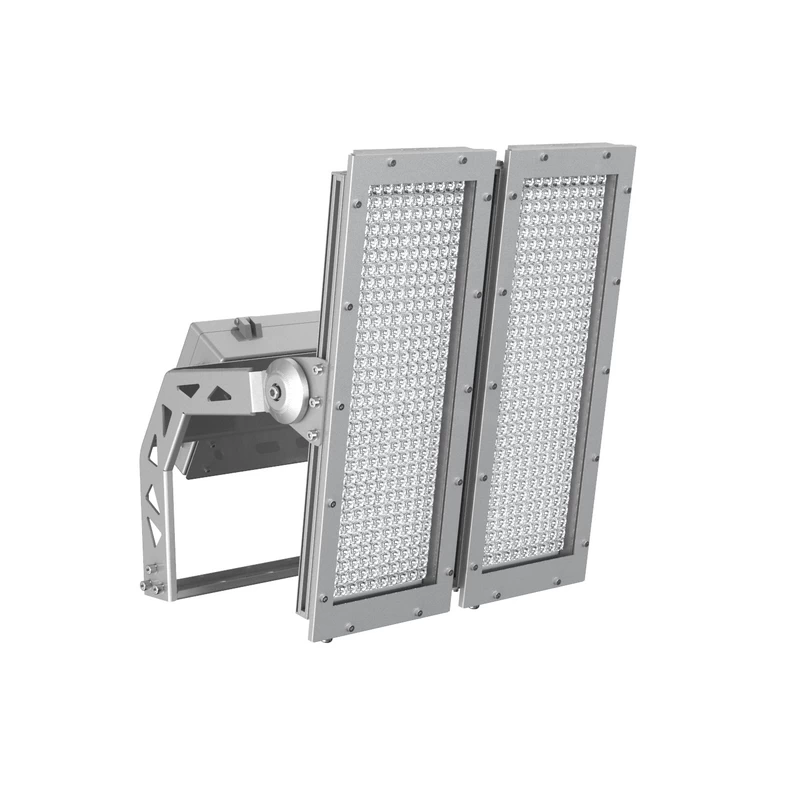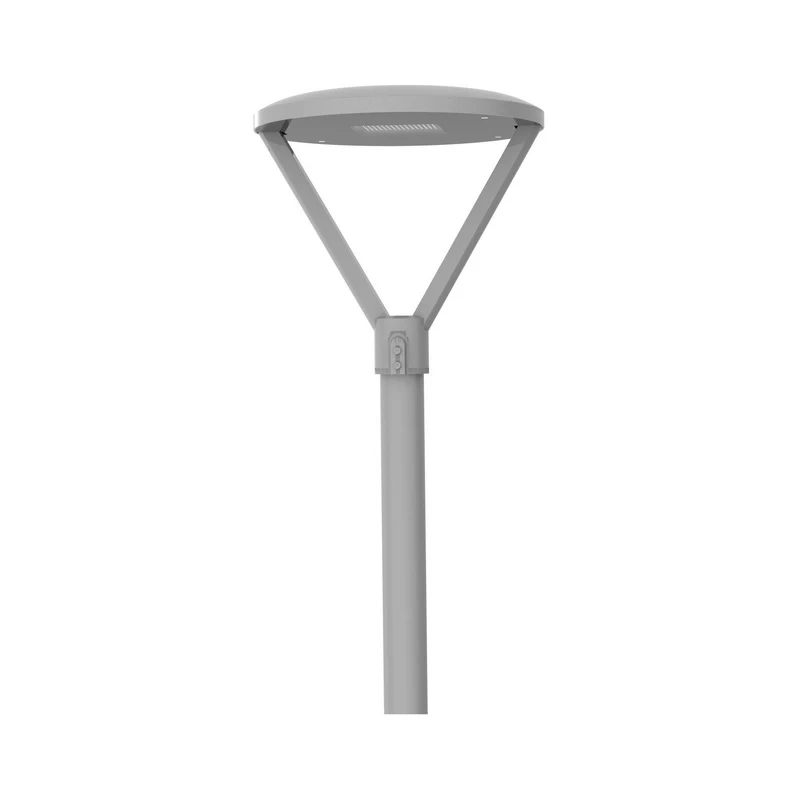목차
토글소개
설치 조명은 공장, 상업용 건물, 경기장 등 기타 산업 공간의 미관, 기능, 안전에 중요한 역할을 합니다. 매립형, 표면형, 매달린 조명 등 각 설치 유형은 환경과 특정 요구 사항에 따라 고유한 이점을 제공합니다. 이 종합 가이드에서는 각 조명 설치 유형의 주요 차이점, 장점, 단점 및 설치 프로세스를 다룹니다.
조명 장착 유형
산업용 또는 상업용 조명기구를 선택할 때는 해당 공간에 가장 적합한 설치 유형을 이해하는 것이 중요합니다. 예를 들어 창고에서는 넓은 조명을 제공하기 위해 매달려 있는 높은 베이 조명을 사용할 수 있습니다. 공장 현장에서는 강렬한 작업 조명에는 표면 장착형 조명기구가 더 적합할 수 있습니다.
조명 설치는 크게 매립형, 표면형, 매달린 설치 유형으로 나눌 수 있습니다:
- 매립형 설치: 고정 장치가 표면, 종종 천장에 매립되어 빛만 보이게 하는 방식입니다.
- 표면 장착: 조명은 표면 자체에 설치됩니다.
- 매달린 장착: 천장이나 다른 구조물에 고정 장치를 매달아 설치합니다.
각각을 자세히 살펴보겠습니다.

매입형 마운팅 조명이란 무엇인가요?
매립형 마운팅은 천장이나 벽에 설치하는 픽스처를 말하며, 픽스처의 본체가 숨겨져 있는 것을 의미합니다. 계속해서 매입형 조명에 대해 자세히 알아보기.
매입형 조명이란 무엇인가요? - 조명 본체가 천장이나 벽의 구멍에 숨겨져 있고 광원만 노출된 조명기구를 말합니다. 매립형 조명은 조명 본체가 눈에 잘 띄지 않게 하려는 경우에 이상적입니다.

매립형 마운팅의 장점:
- 아름답고 심플합니다: 공간감이 강하고 천장과 매끄럽게 어우러져 시각적으로 깔끔한 미학을 연출합니다.
- 빛의 방향을 제어할 수 있습니다: 조명을 특정 영역으로 정확하게 보낼 수 있습니다.
- 매우 안전합니다: 노출된 부품이 없어 충돌에 영향을 받지 않습니다.
- 손쉬운 청소: 조명이 완전히 가려져 먼지가 쌓이는 것을 방지합니다.
매립형 마운팅의 단점:
- 복잡한 설치: 정밀한 절단이 필요하고 천장 공간 요구 사항이 높습니다.
- 열 방출이 불량합니다: 고정 장치가 천장에 밀폐되어 있어 열을 방출할 공간이 제한되어 있습니다.
- 어려운 유지 관리: 고정 장치를 교체하거나 유지 관리하는 것은 번거로운 일입니다.
- 약간 더 높은 비용: 전문가용 매입형 고정물은 더 비싸고 천장 절단 및 배선과 관련된 비용도 있습니다.
매립형 마운팅의 적용 분야:
| 적용 분야 | 일반적인 공간 | 조명 목표 | 추천 매입형 조명 |
|---|---|---|---|
| 산업 | 공장, 창고, 생산 라인 | 높은 밝기, 넓은 커버리지, 내구성 | 하이 베이 매입형 고정 장치, LED 패널 |
| 상업용 | 사무실, 소매점, 호텔, 레스토랑 | 시각적 편안함, 브랜드 강화 분위기, 에너지 효율성 | 다운라이트, 벽면 세척기, 선형 매입형 LED 조명 |
| 주거용 | 거실, 주방, 욕실, 복도 | 주변 조명, 작업 조명, 눈부심 방지 | 작은 조리개 다운라이트, 조절 가능한 스팟 |
| 스포츠 | 실내 경기장, 체육관, 수영장 | 높은 조도, 눈부심 제어, 균일성 | 고출력 매입형 투광 조명, 눈부심 차폐형 다운라이트 |
표면 실장 조명이란 무엇인가요?
표면 장착은 매립형 없이 천장이나 벽에 직접 부착하는 것을 의미합니다. 표면 장착 조명은 콘크리트 천장이나 제한된 천장 높이와 같은 구조적 문제로 인해 매립형 설치가 실용적이지 않은 공간에서 선호되는 경우가 많습니다.
LED는 이제 표면 실장 조명의 주류입니다. 소니는 LED 트라이프루프 조명 및 LED 선형 조명과 같은 전문 LED 표면 실장 조명을 제공합니다. 스포츠, 상업 및 산업 현장에 적합합니다. 문의하기 를 통해 무료 맞춤형 조명 솔루션에 대해 알아보세요.
표면 장착의 장점:
- 간편한 설치: 기존 천장이나 벽에 직접 부착하여 적응성을 극대화합니다.
- 포지셔닝과 이동이 더욱 유연해집니다.
- 손쉬운 유지보수: 램프가 노출되어 있어 쉽게 분해하고 유지보수할 수 있습니다.
- 광범위한 열 방출로 수명이 길어집니다.
표면 장착의 단점:
- 매립형 마운팅만큼 미적으로 깔끔하지는 않습니다.
- 일부 건축 디자인에서 시각적 혼란을 야기할 수 있습니다.
- 눈이 빛나는 표면을 직접 바라볼 가능성이 높아 눈부심을 유발할 수 있습니다.
표면 장착의 응용 분야:
| 적용 분야 | 일반적인 공간 | 조명 목표 | 권장 표면 조명 |
|---|---|---|---|
| 산업 및 유틸리티 | 창고, 작업장, 기계실 | 높은 루멘 출력, 내구성, 손쉬운 유지보수 | 표면 장착형 LED 배튼, LED 기밀 설비 |
| 리테일 및 상업용 | 상점, 슈퍼마켓, 쇼룸 | 제품 강조, 균일한 주변 조명, 시각적 편안함 | 표면 장착형 트랙 조명, LED 선형 조명 |
| 주거용 | 주방, 복도, 발코니, 침실 | 간단한 설치, 일반 조명, 장식 스타일 | 매립형 천장 조명, 장식 조명 |
서스펜션 마운팅 조명이란 무엇인가요?
매달린 마운팅은 막대, 와이어 또는 체인을 사용하여 조명 기구를 천장에 매달아 설치하는 방식입니다. 이러한 유형의 조명은 창고나 경기장과 같이 천장이 높은 공간에서 흔히 사용됩니다.
가장 일반적인 LED 매달린 천장 조명은 다음과 같은 LED 하이 베이 조명입니다. UFO 라운드 또는 선형천장이 매우 높기 때문에 매달아 설치하는 것이 더 적합합니다.
Ledrhythm의 LED 천장 조명 예시:



서스펜션 마운팅의 장점:
- 창고나 경기장처럼 천장이 높은 곳에 적합합니다.
- 조명기구를 작업 공간에 더 가깝게 배치하여 작업 조명에 집중할 수 있습니다.
- 특정 상업적 미학에 적합한 보다 인더스트리얼하고 노출된 룩을 제공합니다.
서스펜션 마운팅의 단점:
- 수직 공간을 차지하며 충돌할 수 있습니다. 천장이 높은 공간에서도 걱정할 필요가 없습니다.
- 빛의 무게를 견딜 수 있는 천장에 설치해야 하며, 그렇지 않으면 떨어질 위험이 있습니다.
서스펜션 마운팅의 애플리케이션:
| 적용 분야 | 일반적인 공간 | 조명 목표 | 추천 서스펜션 조명 |
|---|---|---|---|
| 산업 | 공장, 창고, 작업장 | 높은 루멘 출력, 넓은 커버리지, 손쉬운 유지보수 | 매달린 하이베이 조명 선형 LED 조명기구 |
| 상업용 | 사무실, 소매점, 쇼룸 | 현대적인 미학, 균일한 주변 조명, 시각적 편안함 | 매달린 선형 조명, 장식용 펜던트 |
| 호스피탈리티 | 호텔, 레스토랑, 카페 | 분위기 연출, 초점 조명, 브랜드 스타일 | 장식용 샹들리에, 멀티 조명 펜던트 |
| 주거용 | 식당, 주방, 거실 | 작업 조명, 초점, 스타일 향상 | 식탁이나 아일랜드 위의 펜던트 조명 |
매립형 대 표면형 및 매달린 장착형
매립형과 표면 장착, 표면 장착과 매달린 장착, 심지어 매립형과 매달린 조명을 고려할 때 몇 가지 요소가 작용합니다. 여러 측면을 기준으로 비교해 보겠습니다.

미적 효과
- 매입형 조명: 매끄럽고 눈에 거슬리지 않는 외관을 제공합니다.
- 표면 실장 조명: 눈에 잘 띄면서도 컴팩트합니다.
- 매달린 조명: 눈에 잘 띄고, 그 자체로 디자인적 특징이 될 수 있습니다.
간편한 설치
- 매립형 설치: 천장이나 벽을 잘라내야 하기 때문에 더 까다롭습니다.
- 표면 장착: 더 쉽고, 천장 개조가 필요 없습니다.
- 매달린 장착: 보통 난이도, 고른 빛 배분을 위해 신중한 배치가 필요합니다.
유지 관리
- 매립형 고정물: 수리를 위해 접근하기가 더 어렵습니다.
- 표면 고정 장치: 접근성이 높아 유지 관리가 더 쉬워집니다.
- 매달린 고정물: 접근하기 쉽지만 높이가 높아 사다리가 필요할 수 있습니다.
조명 효율성
- 매입형 조명: 일반적으로 주변 조명을 제공하며 넓은 공간에 이상적입니다.
- 표면 장착: 작업 영역에 이상적인 집중 조명.
- 서스펜션 조명: 배치에 따라 주변 조명과 집중 조명을 모두 제공할 수 있습니다.
비용
- 매립형 설치: 복잡한 설치로 인해 비용이 더 많이 들 수 있습니다.
- 표면 장착: 더욱 비용 효율적이고 유연합니다.
- 서스펜션 장착: 서스펜션의 복잡성에 따라 적당한 비용.
매입형 조명 설치 상세 가이드
안전 수칙:
- 나중에 참조할 수 있도록 조명기구를 설치하기 전에 설명서를 주의 깊게 읽어보세요. 조명기구는 국가 전기 규정 및 모든 해당 지역 규정에 따라 배선해야 합니다. 안전을 위해 적절한 접지가 필요합니다.
- 픽스처를 설치하거나 서비스하기 전에 전원을 끄고 픽스처 내부에 불필요한 부품이 없는지 확인하세요.
- LED 키트를 설치하기 위해 구멍을 뚫을 때 조명기구 배선 및 전기 부품이 손상될 수 있습니다. 화재 또는 감전 위험을 초래할 수 있는 손상된 배선 및 구성품이 있는지 확인하세요.
- 전선의 손상이나 마모를 방지하고 화재나 감전의 위험이 있는 금속판이나 기타 날카로운 물체의 가장자리에 전선이 노출되지 않도록 주의하세요.
- LED 리트로핏 키트를 설치하려면 조명기구의 전기 시스템에 대한 지식이 필요합니다. 자격이 없는 경우 설치를 시도하지 마세요. 자격을 갖춘 전기 기술자에게 문의하세요.
- 그림에 표시된 구멍만 키트로 설치하거나 변경할 수 있습니다. 배선이나 전기 부품을 위해 하우징에 다른 구멍을 남겨두지 마세요.
매입형 천장 설치 단계:
이 설치는 실내 개폐식 천장 애플리케이션에만 적합하며, 아래 단계를 따르세요.
사진 속 조명은 다양한 길이로 제공되는 LED 선형 브래킷 조명입니다. 견적을 문의하세요.

1. 설치하기 전에 포장에서 구성품을 조심스럽게 꺼내고 결함이 있는지 확인합니다. 점검하기 전에 작업용 장갑을 착용하여 먼지와 기름이 조명에 옮겨 붙지 않도록 합니다.

2. 천장의 예약된 구멍에 조명을 설치합니다.

3. 4개의 클립을 구부려 램프를 고정하고 클립의 구멍을 통해 안전 로프를 설치합니다(현지 건축 규정에 따라 안전 로프를 설치하세요).

4. 조명 하우징 커버를 제거하고 AC 라인 입력 와이어의 핀을 제거합니다.

5. 18-14 AWG 트위스트 와이어 커넥터를 사용하여 램프의 배선도에 따라 AC 라인을 램프의 내부 전선에 연결합니다.

6. 전기 하우징 커버를 조립하고 나사로 고정합니다.
표면 조명 설치 방법
표면 장착형 조명은 일반적으로 매립형 조명보다 설치가 쉬워 상업 및 산업 공간에 많이 사용됩니다.
표면 조명 설치 단계:
- 픽스처를 배치합니다: 천장이나 벽에 표면 장착형 조명의 위치를 표시합니다.
- 고정 장치를 장착합니다: 나사와 마운팅 브래킷을 사용하여 고정 장치를 천장이나 벽에 고정합니다.
- 조명 배선 연결하기: 조명기구의 지침에 따라 전선을 연결합니다.
- 조명을 설치합니다: 조명기구를 장착하고 배선을 연결한 후 전구 또는 LED 패널을 설치합니다.
매달린 조명 설치 방법
매달린 조명은 설치가 더 복잡하지만 넓은 공간에 강력한 조명을 제공합니다.
서스펜션 조명 설치 단계:
- 서스펜션 하드웨어를 설치합니다: 서스펜션 체인, 막대 또는 와이어를 천장에 고정합니다.
- 조명기구를 부착합니다: 조명기구를 서스펜션 하드웨어에 연결합니다.
- 조명 배선하기: 모든 전기 배선이 안전하게 연결되어 있는지 확인하고 현지 규정을 준수하세요.
- 조명 테스트하기: 설치가 완료되면 조명기구가 제대로 작동하고 공간에 적절한 조명을 제공하는지 테스트합니다.
결론
따라서 어떤 조명 설치 방법을 사용하든 고유한 특성이 있으며 좋거나 나쁘지 않습니다. 선택할 때는 사용 시나리오와 조명 요구 사항을 기반으로 선택해야 합니다.
사람들이 자주 묻는 질문
매입형 조명기구란 무엇인가요?
매입형 조명기구는 천장 안쪽에 설치하도록 설계된 조명기구로, 숨겨져 있으면서 조명을 제공합니다.
표면 실장이란 무엇을 의미하나요?
천장, 벽 또는 기타 평평한 공간의 표면에 설치된 고정물을 말합니다.
매달린 천장의 형광등 트로퍼를 매립형 LED 조명으로 교체할 수 있나요?
예. 많은 최신 매입형 LED 패널과 다운라이트는 천장에 매달린 기존 형광등 트로퍼를 개조하도록 설계되어 큰 구조 변경 없이 에너지 효율과 조명 품질을 개선합니다.
매입형 조명기구를 매달린 천장에 설치할 수 있나요?
대부분의 매달린 천장은 매입형 조명 기구를 설치할 수 있습니다. 그러나 천장이 조명기구의 무게를 지탱할 수 있는지, 천장의 깊이가 조명기구를 수용할 수 있는지, 전기 요구 사항이 충족되는지 확인해야 합니다.
매달린 선형 LED 조명은 일반적으로 어디에 사용되나요?
매달린 선형 LED 조명은 넓고 고른 배광과 높은 설치 유연성으로 인해 상업 및 산업 공간에서 일반적으로 사용됩니다. 예를 들어 개방형 사무실, 쇼룸, 작업대, 창고 복도, 천장이 높은 기타 공간 등이 있습니다.








